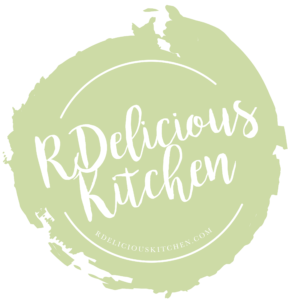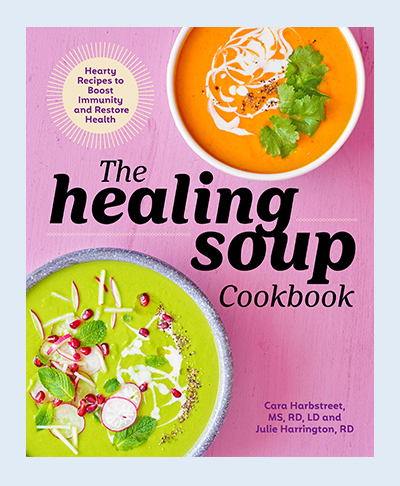Today is Sample Whole Grains Day! To celebrate, I am sharing the inside scoop about whole grains and sharing whole grain recipes from Registered Dietitians.
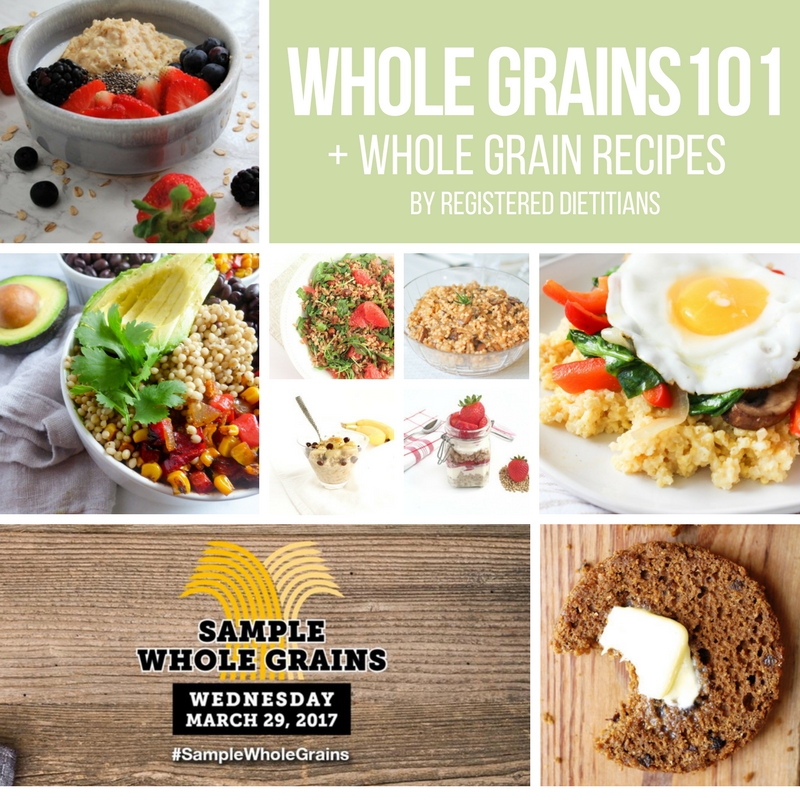 What are whole grains?
What are whole grains?
All grains start as whole grains. Whole grains are the entire seed of a plant. The seed, also called a “kernel”, is made up of three edible parts – the bran, the germ, and the endosperm.
Bran: The bran is the multi-layered outer skin of the edible kernel. It contains important antioxidants, B vitamins, and fiber.
Germ: The germ is the embryo which has the potential to sprout into a new plant. It contains many B vitamins, some protein, minerals, and healthy fats.
Endosperm: The endosperm is the germ’s food supply, which provides essential energy to the young plant so it can send roots down for water and nutrients, and send sprouts up for sunlight’s photosynthesizing power. The endosperm is by far the largest portion of the kernel. It contains starchy carbohydrates, proteins and small amounts of vitamins and minerals.

What is a “refined grain”?
“Refined grain” are processed (or milled) referring to grains that are not whole, because they are missing one or more of their three key parts (bran, germ, or endosperm). White flour and white rice are refined grains, for instance, because both have had their bran and germ removed, leaving only the endosperm.
Health Benefits of Whole Grains:
With the bran, germ, and endosperm being all intact, whole grains have a variety of health benefits. People who eat whole grains as part of a healthy diet have a reduced risk of some chronic diseases. Grains provide many nutrients that are vital for the health and maintenance of our bodies.
- B vitamins (thiamin (Vitamin B1), riboflavin (Vitamin B2), niacin (Vitamin B3) and folate (Vitamin B9) are important in a variety of biological functions.
- Folate (folic acid), one of the B vitamins, helps the body form new cells and can prevent certain birth defects.
- Iron is used to carry oxygen in the blood.
- Magnesium is a mineral that is involved in more than 300 processes in the body.
- Selenium is important for a healthy immune system and regulating thyroid hormone action.
How to identify whole grains:
The Whole Grain Council has developed a Whole Grain Stamp to help consumers easily identify whole grains. There are three different varieties of the Whole Grain Stamp: the 100% Stamp, the 50%+ Stamp, and the Basic Stamp.
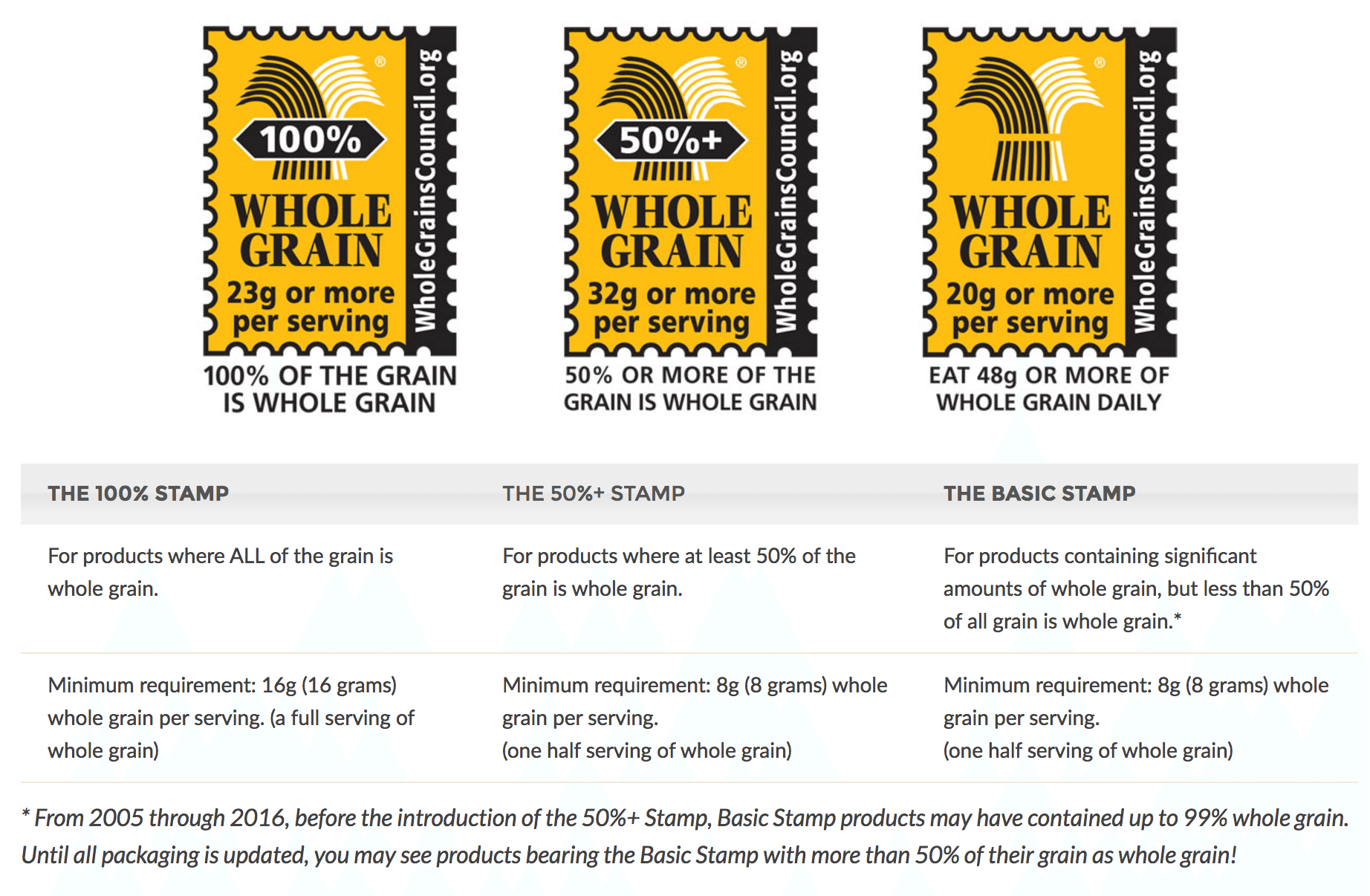
For more information, visit www.wholegrainscouncil.org
Oats:
Oats have a sweet flavor that makes them a favorite for breakfast cereals. Unique among grains, oats almost never have their bran and germ removed in processing. In the U.S., most oats are steamed and flattened to produce “old-fashioned” or regular oats, quick oats, and instant oats. The more oats are flattened and steamed, the quicker they cook – and the softer they become. If you prefer a chewier, nuttier texture, consider steel-cut oats, also sometimes called Irish or Scottish oats. Steel-cut oats consist of the entire oat kernel (similar in look to a grain of rice), sliced once or twice into smaller pieces to help water penetrate and cook the grain.
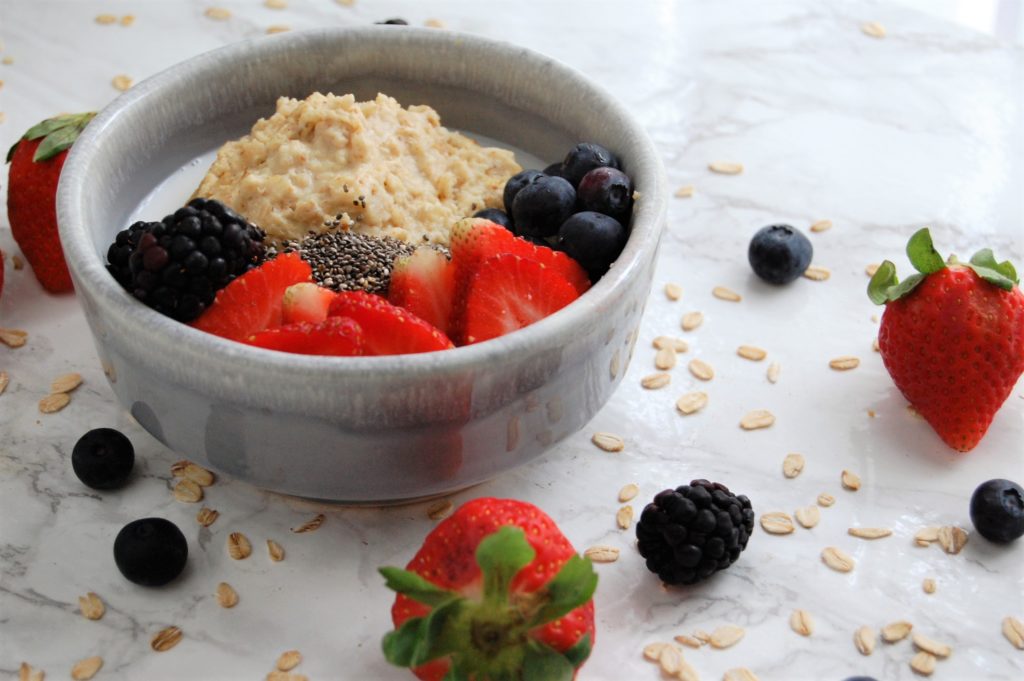 Baked Vanilla Oatmeal Custard via Nutrition to Fit
Baked Vanilla Oatmeal Custard via Nutrition to Fit
Carmalized Banana Dark Chocolate Oatmeal via Lively Table
Strawberry Chocolate Overnight Oats via Nutrition by Nazima
Peaches and Cream Overnight Oats via Nutritioulicious
Broccoli Cheddar Oatmeal Bake via Hungry Hobby
Almond Pistachio Cocoa Bites via Amy Gorin Nutrition
5 Ingredient Peanut Butter Granola Bars via The Real Food Dietitians
Barley:
Barley is one of the oldest cultivated grains.Barley has a particularly tough hull, which is difficult to remove without losing some of the bran. Hulled barley, available at health food stores, retains more of the whole-grain nutrients but is very slow-cooking.
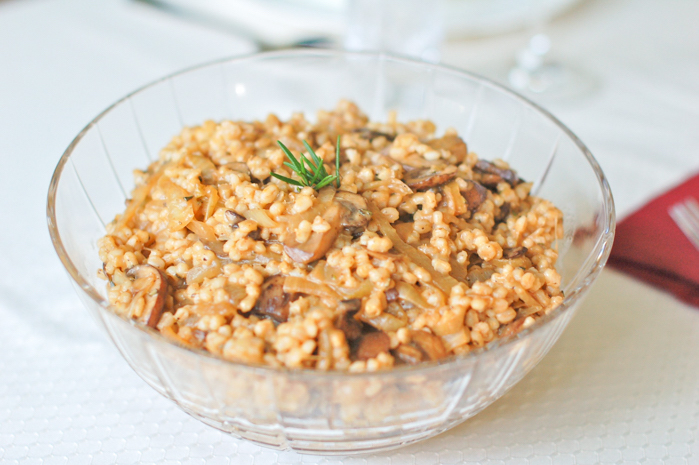 Mushroom Onion Barley via Nutritioulicious
Mushroom Onion Barley via Nutritioulicious
Chicken Barley Stew via Call Me Betty
Butternut Squash, Beet, and Barely Salad via Buckey List Tummy
Persian Creamy Barley Soup via The Delicious Crescent
Risotto-Style Barley via Life Long Nutrition and Fitness
Farro:
Farro, also known as emmer, is an ancient strain of wheat, was one of the first cereals ever domesticated in the Fertile Crescent, and centuries later, it served as the standard daily ration of the Roman legions. But over the centuries, emmer was gradually abandoned in favor of durum wheat, which is easier to hull.
 Grapefruit Arugula Farro Salad via Lively Table
Grapefruit Arugula Farro Salad via Lively Table
Apple Farro Salad via Lively Table
Farro Buddha Bowl via Nutritioulicious
Spring Pea & Radish Farro Salad with Lemon Mint Vinaigrette via Nutritioulicious
Roasted Tomato, Farro, and Kale Salad via Euphoria Nutrition
Artichokes and Lemon Farro via One Hungry Bunny
Sorghum:
Farmers on the Great Plains from South Dakota to Texas appreciate that sorghum thrives where other crops would wither and die; in drought periods, in fact, it becomes partially dormant. Worldwide, about 50% of sorghum goes to human consumption. Sorghum can be eaten like popcorn, cooked into porridge, ground into flour for baked goods, or even brewed into beer.
 Summer Sorghum Bowl with Sweet Corn Succotash via Street Smart Nutrition
Summer Sorghum Bowl with Sweet Corn Succotash via Street Smart Nutrition
Maple Poached Pear Breakfast Sorghum via Lively Table
Sweet Potato Sorghum Salad via Street Smart Nutrition
Roasted Root Vegetable Power Bowl via RDelicious Kitchen
Strawberry Vanilla Sorghum Parfaitvia Nutrition Starring You
Stir-Fried Thai Sorghum Bowl via The Plant Powered Dietitian
Teff:
This nutritious and easy-to-grow type of millet is largely unknown outside of Ethiopia, India and Australia. Today it is getting more attention for its sweet, molasses-like flavor and its versatility; it can be cooked as porridge, added to baked goods, or even made into “teff polenta.” Teff grows in three colors: red, brown and white.
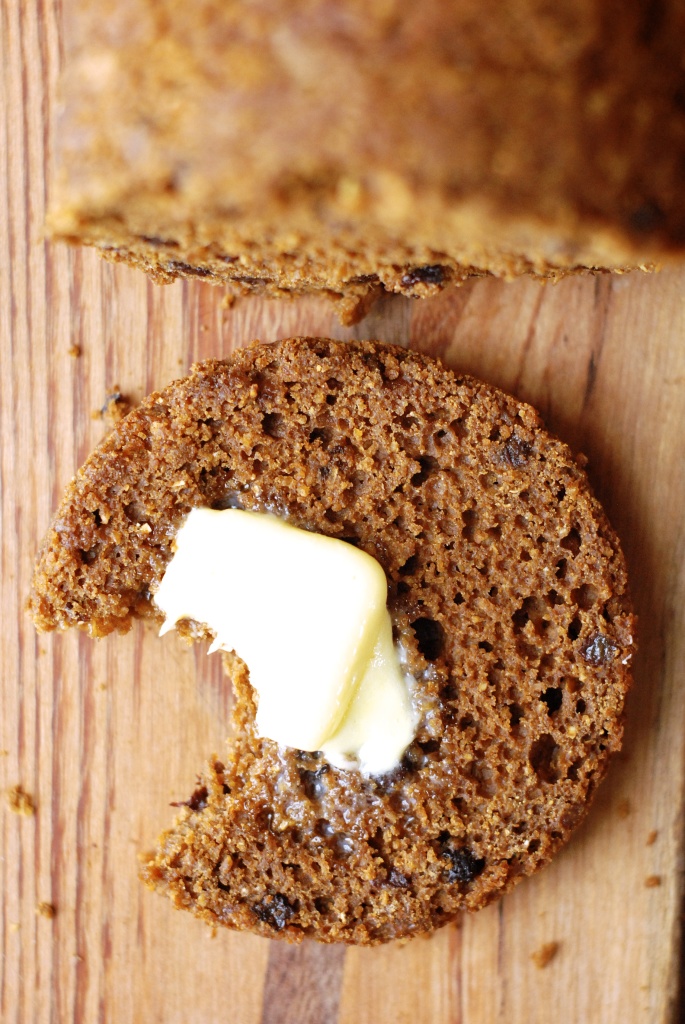 Brown Bread via Kumquat
Brown Bread via Kumquat
Millet:
Millet is not just one grain but the name given to a group of several small related grains that have been around for thousands of years and are found in many diets around the world. They include pearl millet (Pennisetum glaucum), foxtail millet (Setaria italica), proso millet (Panicum miliaceum), finger millet / ragi (Eleucine coracana), and fonio (Digitaria exilis). Millet’s incredible versatility means it can be used in everything from flatbreads to porridges, side dishes and desserts – even fermented and consumed as an alcoholic beverage.
 Cheesy Millet Sautéed Vegetables and Fried Egg via RDelicious Kitchen
Cheesy Millet Sautéed Vegetables and Fried Egg via RDelicious Kitchen
Wild Blueberry & Caramel Galettes via Kumquat
Veggie Millet Skillet via Your Choice Nutrition
Amaranth:
Today amaranth is making its way back, thanks to a lively, peppery taste and a higher level of protein (it’s roughly 13-14% protein) compared to most other grains. In South America, it is often sold on the streets, popped like corn. Amaranth has no gluten, so it must be mixed with wheat to make leavened breads. It is popular in cereals, breads, muffins, crackers and pancakes.
 Honey Balsamic Chicken, Kale & Amaranth via Snacking in Sneakers
Honey Balsamic Chicken, Kale & Amaranth via Snacking in Sneakers
Cherry Amaranth Almond Smoothie via Live Best
Freekeh:
Freekeh is a hard wheat (often durum wheat) that is harvested when the plant is still young and green, then roasted and rubbed. This unique process gives freekeh its signature smoky flavor. Similar to bulgur wheat, freekeh is often sold cracked into smaller, quicker cooking pieces.
 Freekeh Pilaf via Kroll’s Korner
Freekeh Pilaf via Kroll’s Korner
Spicy Thai Freekeh Bowl Salad via Street Smart Nutrition
Freekeh Chicken & Cabbage Soup via Emily Kyle Nutrition
Tamari Freekeh Mango and Avocado Salad via Triad to Wellness
Moroccan Freekeh Pilaf via The Plant Powered Dietitian
Freekeh Soup with Du Puy Lentils and Kale via 80 Twenty Nutrition
resources:
https://wholegrainscouncil.org/
https://www.choosemyplate.gov
http://www.heart.org/HEARTORG/

